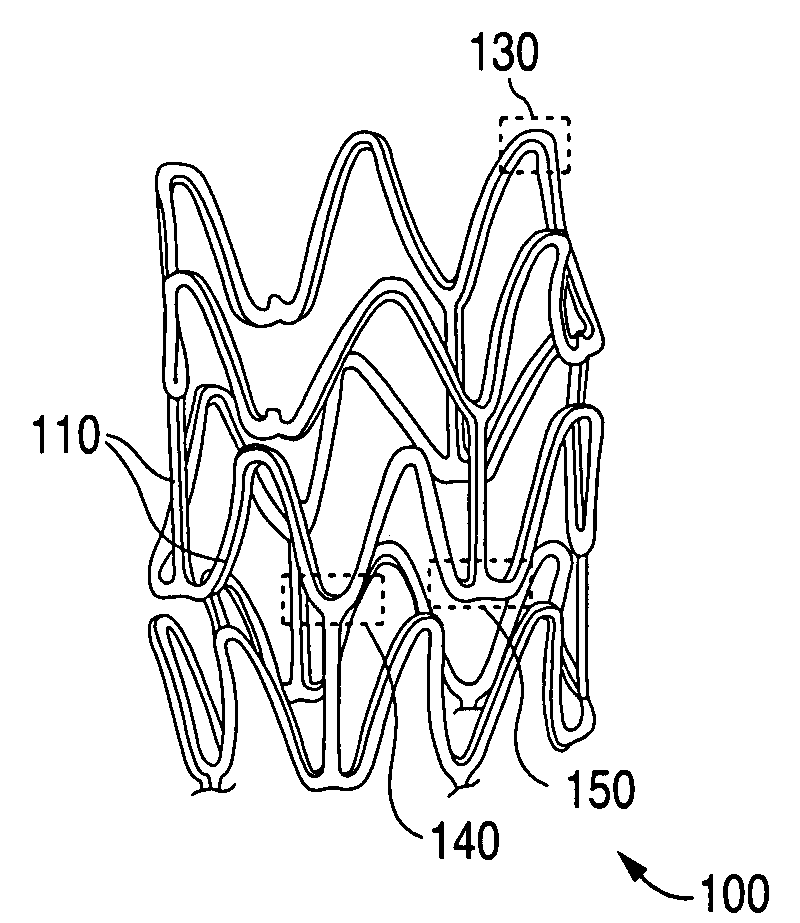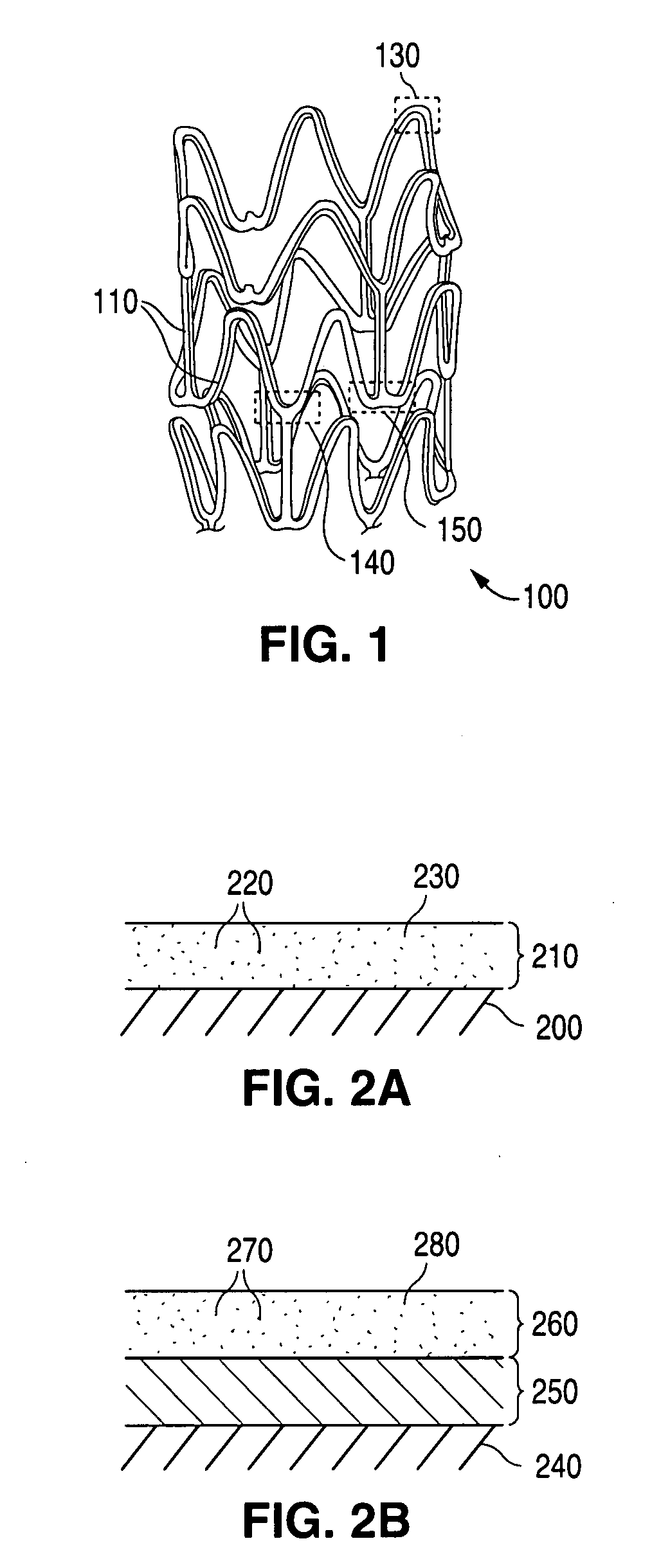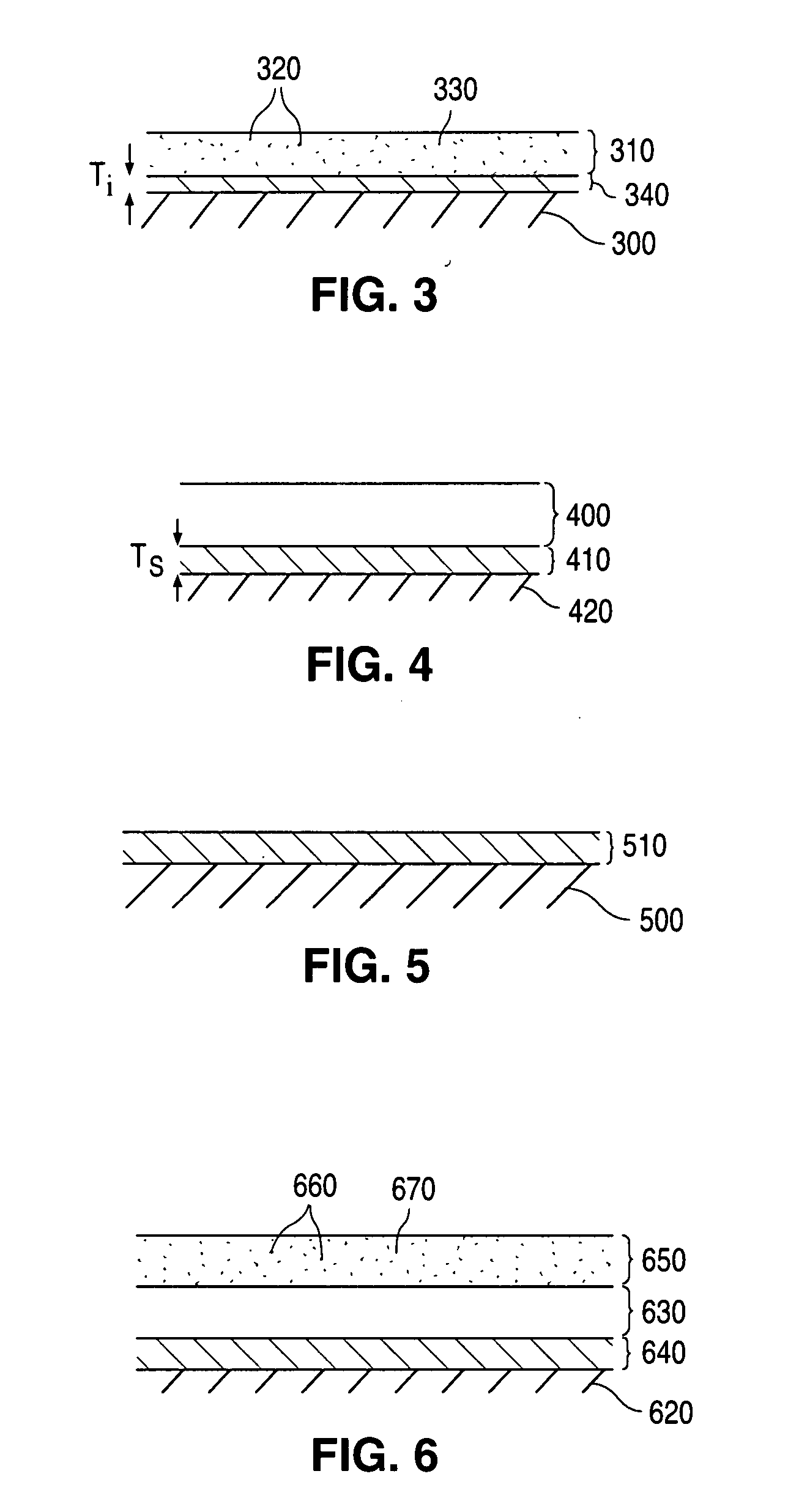Implantable medical devices with elastomeric copolymer coatings
- Summary
- Abstract
- Description
- Claims
- Application Information
AI Technical Summary
Benefits of technology
Problems solved by technology
Method used
Image
Examples
example 1
PLLA-co-PDO-co-PCL Random Copolymer Synthesis
[0073]In this example, 10 g dioxanone (DO), 10 g caprolactone (CL), and 10 g L-lactide (LLA) as monomers, 0.084 ml stannous octoate as catalyst, 0.22 ml dodecanol as initiator are used.[0074]Step 1: One 500 three neck glassware reactor with a mechanical stirring rod is placed in a glove box which is filled with high purity nitrogen. The reactor is preheated to remove all moisture.[0075]Step 2: DO, CL, LLA, initiator and catalyst are added into the reactor. The mixture is stirred at 110° C. for 40 hours.[0076]Step 3: 200 ml CHCl3 is then added into reactor to dissolve final product. Finally, the product solution is precipitated into 800 ml methanol, filtered out and dried in vacuum at 80° C. until constant weight.
example 2
Preparation of Coating Solution and Coating Layer on PLLA Stent Backbone
[0077]The coating solution is prepared by mixing synthesized copolymer with drug in a solvent. Everolimus, Sirolimus, Paclitaxel, or their derivatives are used as drug, while acetone, dimethylene chloroform, or a mixture thereof is used as solvent. The weight ratio of copolymer to drug is in the range of 1:1 to 5:1, and the weight percent of copolymer in the solution is in the range of 0.1-4 wt %. The coating layer is prepared through spray / dip / drop coating of solution on stent backbone.
PUM
| Property | Measurement | Unit |
|---|---|---|
| Elastomeric | aaaaa | aaaaa |
| Adhesion strength | aaaaa | aaaaa |
| Elasticity | aaaaa | aaaaa |
Abstract
Description
Claims
Application Information
 Login to View More
Login to View More - R&D
- Intellectual Property
- Life Sciences
- Materials
- Tech Scout
- Unparalleled Data Quality
- Higher Quality Content
- 60% Fewer Hallucinations
Browse by: Latest US Patents, China's latest patents, Technical Efficacy Thesaurus, Application Domain, Technology Topic, Popular Technical Reports.
© 2025 PatSnap. All rights reserved.Legal|Privacy policy|Modern Slavery Act Transparency Statement|Sitemap|About US| Contact US: help@patsnap.com



